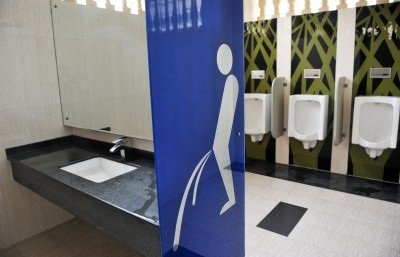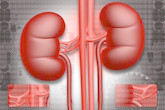Diabetes insipidus: symptoms, diagnosis and treatment criteria
Diabetes insipidus is a somewhat special condition, which causes your kidneys to excrete up to 20 litres of urine a day compared to a normal volume of 1.5 – 1.8 litres per day. This problem is caused by failure of hypothalamus to excrete vasopressin or by failure of kidneys to recognize the hormone.
Why does vasopressin cause diabetes insipidus?
Vasopressin (antidiuretic hormone or ADH) is a protein hormone, which is secreted by a part of the brain called hypothalamus (in its nuclei supraopticus and paraventricularis). In the human body this hormone executes several functions. It increases water reabsorption from primary urine to eliminate excessive loss of body water and it also constricts the blood vessels (this is why it is called vasopressin). This second function of this hormone therefore results in blood pressure increase and in kidney blood circulation decrease, which ultimately also helps to eliminate excessive loss of body water. If this hormone is not produced by hypothalamus or if it does not work properly, large volumes of water are excreted from the body, which results in diabetes insipidus condition.
Diabetes insipidus symptoms, diagnosis and treatment guidelines
Symptoms
The condition manifests itself as frequent urination (10 – 20 times more frequent than in healthy individuals) with excretion of nearly colorless, watery urine. This may even result in bedwetting as urine is excreted constantly and even at night, while we sleep.
At the same time the patient is over thirsty and drinks a lot in order to compensate for excess water loss.
As the second function of ADH is blood pressure regulation, the patient suffers from low blood pressure and feels tired, dizzy and may even faint.
Types of diabetes insipidus
Basically there are four common types of diabetes insipidus: central (or neurogenic) diabetes insipidus, peripheral (or nephrogenic) diabetes insipidus, gestational diabetes insipidus and dipsogenic diabetes insipidus.
While neurogenic diabetes insipidus is caused by lack of vasopressin, due to the fact that hypothalamus is not able to produce this hormone for whatever reason (e.g. following brain injury or conditions affecting brain tissues), nephrogenic diabetes insipidus is caused by incapability of kidneys to respond to vasopresine. Gestational diabetes insipidus is caused by an enzyme produced by placenta, which destroys vasopressine and dipsogenic diabetes insipidus is caused by failure of the "thirst center" in the brain.
Diagnosis of diabetes insipidus
First of all your doctor will need to check out whether your frequent urination is not caused by diabetes mellitus, which has nothing to do with diabetes insipidus, except this particular symptom of frequent urination. In order to determine the cause of your problem the doctor will draw your blood and urine and measure glucose level in your blood and urine. If both values are normal (e.g. blood glucose level between 3.5 – 5.5 mmol/l and urine glucose level 0 mmol/l) you are probably suffering from diabetes insipidus.
The second test your doctor will need to perform is called the Desmopressin test and it will help your doctor see which type of diabetes insipidus you are suffering from.
Desmopressin is a synthetic vasopressin, which is administred to a patient intravenously. If the volume of urine gets down following desmopressin infusion the patient is suffering from central diabetes insipidus. If not the patient is suffering from peripheral diabetes insipidus.
Diabetes insipidus treatment guidelines
Treatment guidelines for diabetes insipidus may slightly vary in each country but the standard treatment options available worldwide are as follows:
Central diabetes insipidus treatment
The treatment depends on the cause of lack of natural vasopressin. If the lack is caused by brain tumor or injury, the doctor will treat this first and then start the regular diabetes insipidus treatment, which consists of administration of desmopressin (synthetic ADH). Desmopressin can be taken as oral pills, nasal spray or as an injection. While on desmopressin you should only drink when you are thirsty.
Peripheral diabetes insipidus treatment
The treatment of this type of DI is more difficult as the primary cause is the incapability of kidneys to respond to vasopressin. Therefore your body produces enough vasopressin but your kidneys cannot respond to it properly. Therefore you will not be given any desmopressin. On the other hand you will be instructed to increase your daily intake of fluids to avoid dehydration. You will also have to be on a low-salt diet to avoid excessive urination.
In some cases it is possible to use diuretics to treat this form of diabetes insipidus. While diuretics normally increase production of urine, some of them, such as hydrochlorothiazide may actually prove useful in treating diabetes insipidus.
Peripheral (nephrogenic) diabetes insipidus may also be caused by various medication you are taking. In such case you should talk to your doctor about your problem and ask for adjustment of your medication.
Gestational diabetes insipidus treatment
In pregnancy women may develop a mild form of gestational diabetes insipidus due to the fact that their placenta produces the enzyme called vasopressinase, which destroys vasopressine. It is therefore necessary to take desmopressin to deal with this problem.
Dipsogenic diabetes insipidus treatment
This form of diabetes insipidus is caused by a problem with brain thirst center, which does not work properly. Sometimes this condition is caused by mental problems. The only available treatment option for this problem is dealing with those mental problems as neither desmopressin nor hydrochlothiazide diuretics will work.
Remember to always see your doctor when you experience any frequent urination symptoms!
| Written by: | Michal Vilímovský (EN) |
|---|---|
| Education: | Physician |
| Published: | February 13, 2013 at 1:45 AM |
| Next scheduled update: | February 13, 2015 at 1:45 AM |
Related articles
Get more articles like this in your inbox
Sign up for our daily mail and get the best evidence based health, nutrition and beauty articles on the web.





Ache in left arm that you should not ignore
Alkaline water dangers: why you should not drink it
How to Avoid Sleepiness While Studying?
23 Foods That Increase Leptin Sensitivity
Low dopamine (e.g. dopamine deficiency): causes, symptoms, diagnosis and treatment options
Swollen taste buds: the ultimate guide to causes, symptoms and treatment
Thin endometrial lining: causes, symptoms, diagnosis and treatment
Pimples inside nose: the complete guide
Holes in tonsils: definition, symptoms, treatment and prevention
How to deal with an ingrown hair cyst
Allegra vs. Zyrtec vs. Claritin
Allergy to penicillin and alternative antibiotics
How to get rid of phlegm (excessive mucus) in throat? Detailed guide to medical and home remedies, symptoms and causes
What causes stomach ache after meals?
Liver blood test results explained